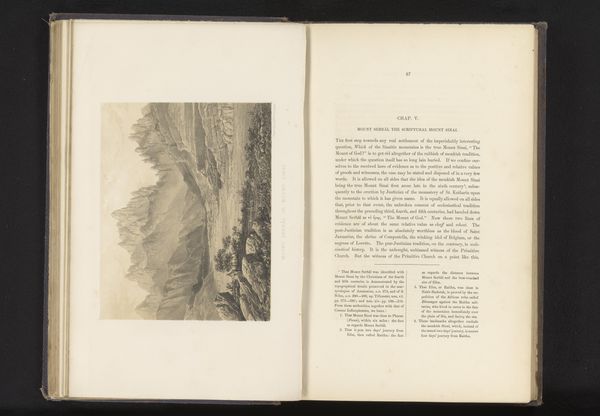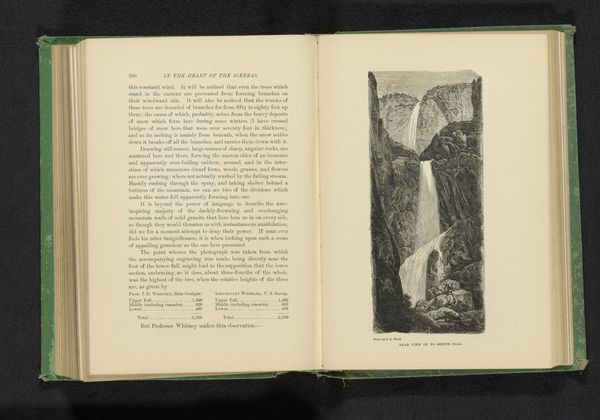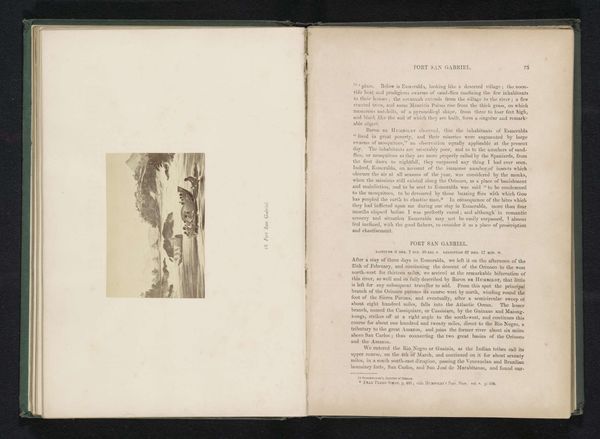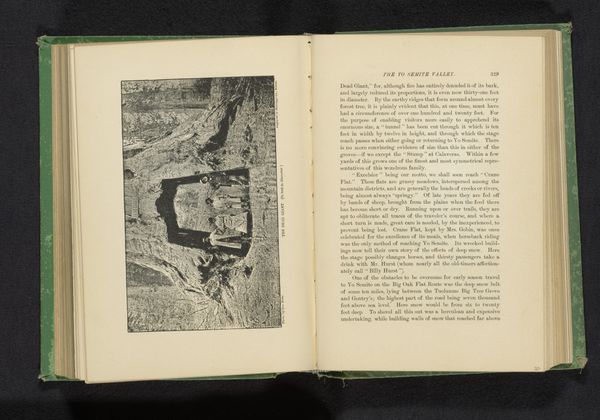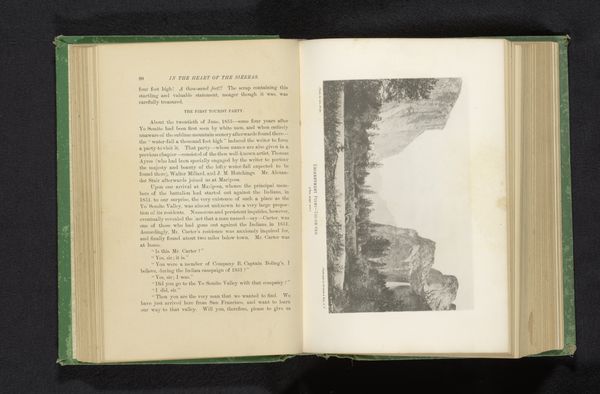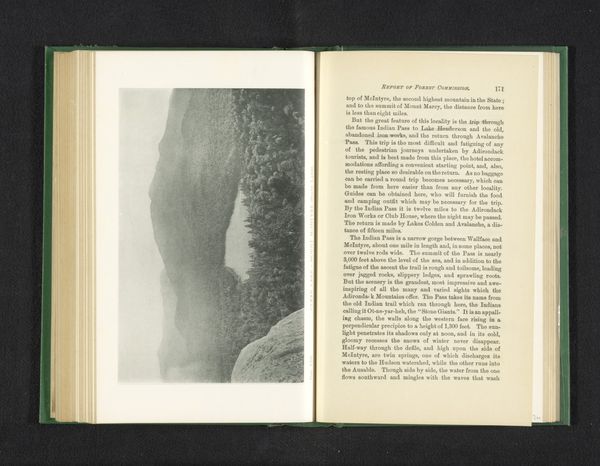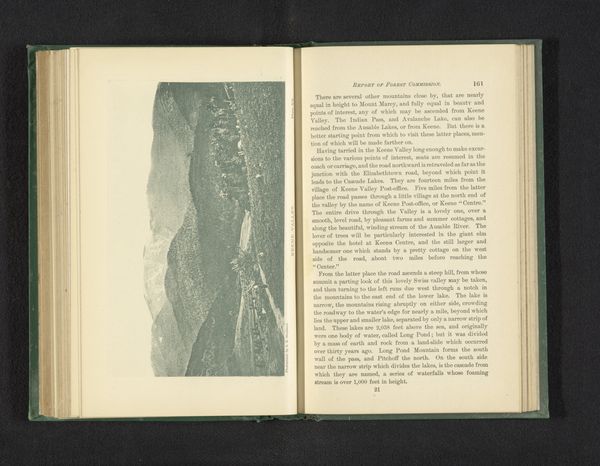
#
aged paper
#
homemade paper
#
paper non-digital material
#
paperlike
#
folded paper
#
thick font
#
handwritten font
#
letter paper
#
paper medium
#
historical font
Dimensions: height 99 mm, width 128 mm
Copyright: Rijks Museum: Open Domain
Curator: Here, in this unassuming book illustration entitled "Gateway, Garden of the Gods," created by H.B. Vanderveer sometime before 1893, we see a towering rock formation rendered in stark black and white. It's interesting that it’s reproduced on this very aged letter paper. Editor: It gives the image a poignant, weathered feel. There is something really striking in this contrast between the scale and grandeur of the natural wonder it captures and the seeming ephemerality of its hand-produced carrier. Is that folded homemade paper I see? The entire composition emphasizes a distinct pre-industrial ethos, somehow. Curator: Exactly! And within that homemade feel, there's a sense of durability and resilience. I think the composition intentionally highlights the inherent, seemingly immutable essence of the landscape. Vanderveer isn’t just depicting a place, but the feeling of a place; he communicates continuity and the slow passage of time. We might examine that heavy font as evidence. Editor: But time and place are so linked with specific communities, too. To see this, you have to realize that representations of natural landscapes are never neutral, nor disconnected from social forces. Whose "gods" were worshipped here? The colonial context would certainly color whose perspective shaped even how we name a natural wonder like this "gateway," as if to anywhere we now colonizers lead to. Curator: True, names carry cultural weight. "Gateway" suggests passage and transition—perhaps embodying the frontier spirit that drove exploration and settlement in the American West. It can become an easy way to suggest freedom to any. Editor: We must always be conscious of the way an image can serve dominant narratives. What appears simply photographic and even natural to one person, might conceal structures of power and inequality for another. Curator: Very well said, and it also is interesting that a thick handwritten historical font gives it a human element, countering its representation by colonial institutions. Vanderveer, by presenting the landscape in this handcrafted way, seemingly gives agency to local voices to interpret and cherish the beauty surrounding them, which runs the danger of being eclipsed. Editor: And even those acts of cherishing nature may also include implicit power structures and privilege too. The picture of landscape remains far from innocent! But hopefully the picture inspires useful action.
Comments
No comments
Be the first to comment and join the conversation on the ultimate creative platform.

